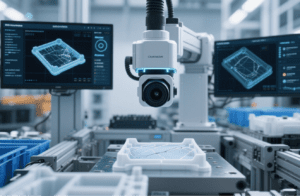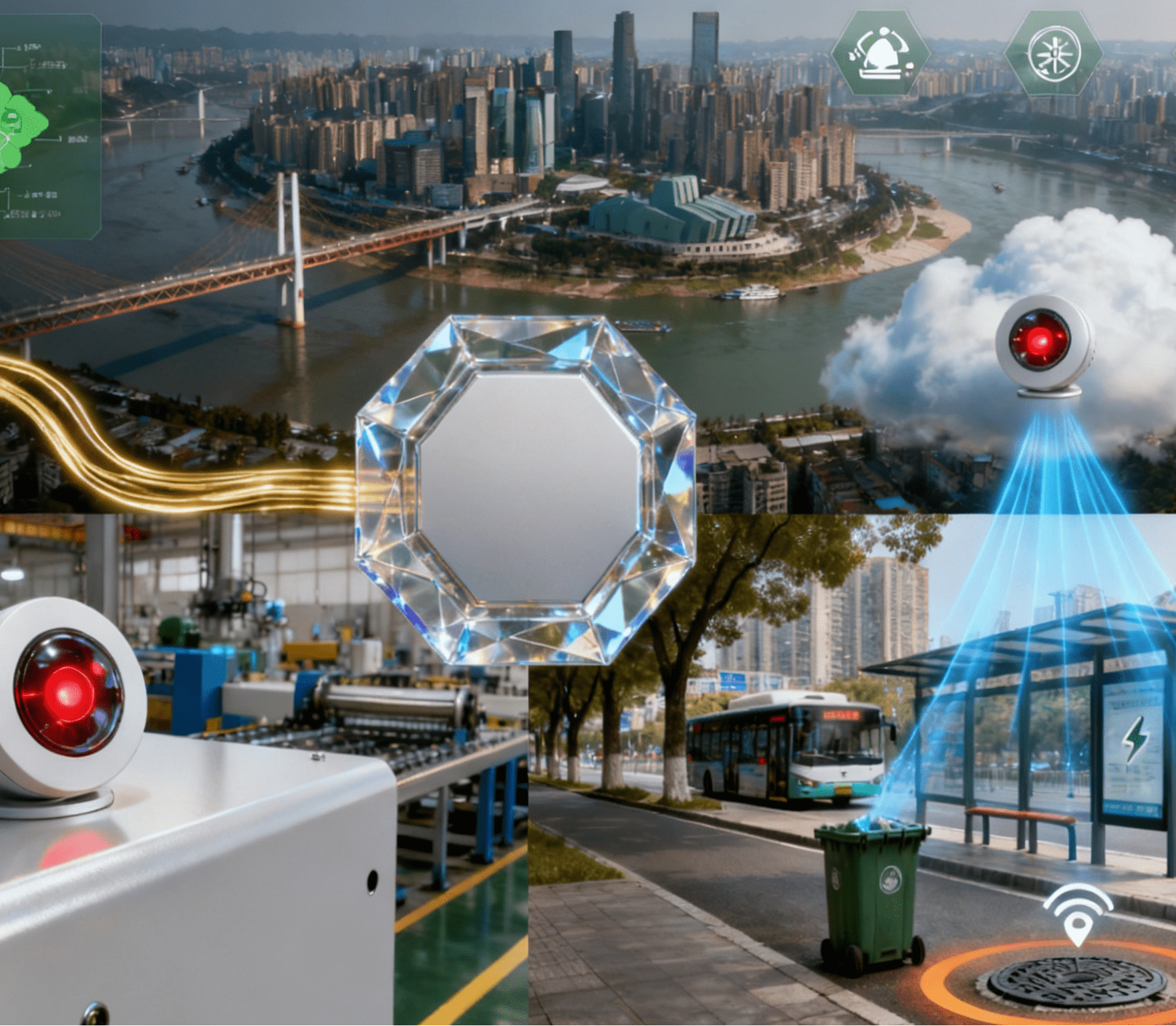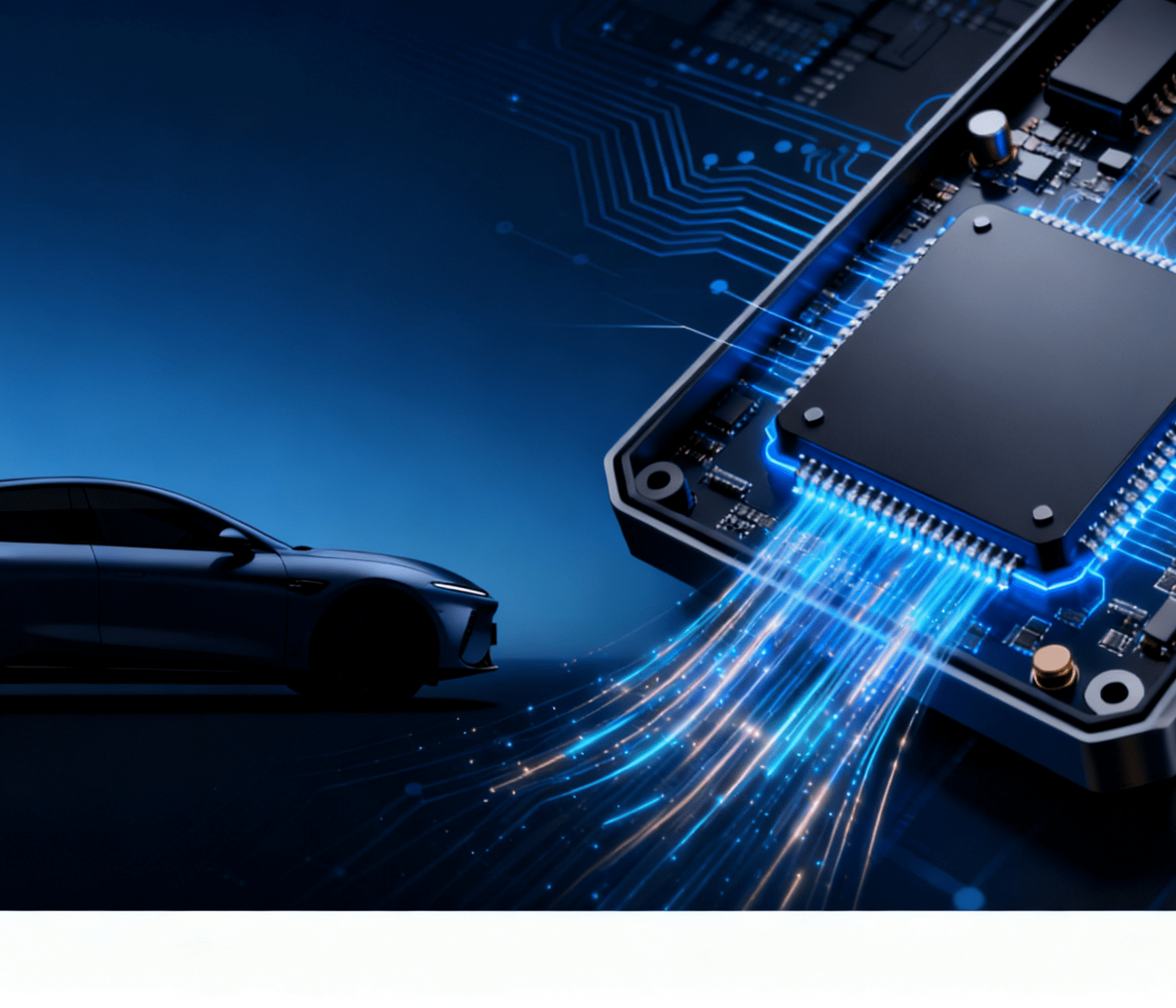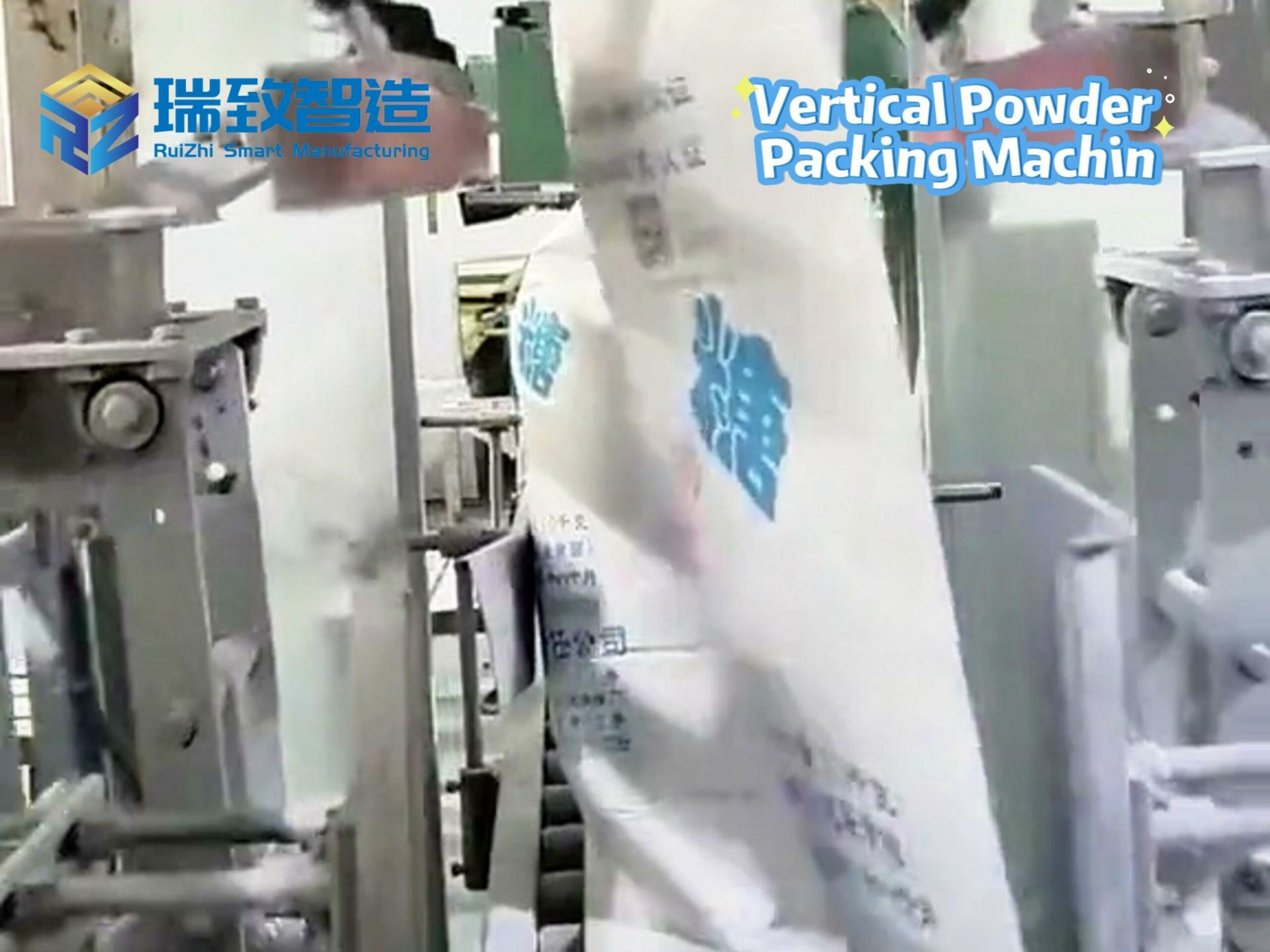Table of Contents
ToggleAutomatic Injection-Molded Part Feeding and Assembly: Transforming Manufacturing Efficiency and Precision

Introduction
In the modern manufacturing landscape, the production of injection-molded parts is a cornerstone of countless industries, from automotive and consumer electronics to medical devices. The efficiency and precision of feeding and assembling these parts are critical to overall productivity, product quality, and cost – effectiveness. Traditional manual and semi – automated methods for handling injection – molded parts are often associated with limitations such as low throughput, inconsistent quality, and high labor costs. Automatic injection – molded part feeding and assembly systems have emerged as a revolutionary solution, leveraging advanced technologies to streamline the manufacturing process.
Technical Components of Automatic Injection-Molded Part Feeding and Assembly Systems
1. Part Feeding Systems
Vibratory Bowl Feeders
Vibratory bowl feeders are one of the most commonly used components in automatic part feeding. These devices use vibrations to move injection – molded parts along a helical track within a bowl – shaped container. The track is designed with specific geometries, such as chutes, slots, and rails, which orient the parts in the desired position as they move up the track. For example, in the production of small plastic gears for consumer electronics, vibratory bowl feeders can precisely orient each gear so that its teeth are aligned correctly for subsequent assembly operations. The vibrations are generated by electromagnetic or electromechanical actuators, and the intensity and frequency of the vibrations can be adjusted to optimize the feeding process for different part shapes and sizes.
Flexible Feeding Systems
In recent years, flexible feeding systems have gained popularity, especially for handling parts with complex geometries or in high – mix, low – volume production scenarios. These systems typically combine a random part presentation area with advanced vision – based recognition and robotic picking. For instance, 3D vision cameras can scan a pile of injection – molded parts, create digital models of each part, and identify its orientation and position. Robotic arms equipped with specialized end – effectors, such as vacuum cups or grippers with force – sensing capabilities, can then pick the parts precisely. This flexibility allows manufacturers to quickly switch between different part types without the need for extensive retooling, reducing changeover times and increasing production agility.
2. Assembly Systems
Robotic Assembly Cells
Robotic assembly cells are at the heart of automatic injection – molded part assembly. Multi – axis robotic arms, such as six – axis articulated robots, offer a high degree of freedom and precision. These robots can perform a wide range of assembly tasks, including part insertion, fastening, and joining. For example, in the assembly of automotive interior components, robotic arms can accurately insert injection – molded clips into pre – defined holes in dashboards, ensuring a secure fit. Advanced robotic systems are also equipped with sensors, such as force – torque sensors, which can detect the amount of force applied during assembly. This helps prevent damage to the parts and ensures that each assembly meets the required specifications.
Conveyor – Based Assembly Lines
Conveyor – based assembly lines are another common configuration for automatic part assembly. Parts are transported along a conveyor belt, and various assembly operations are carried out at different stations along the line. This setup is highly suitable for high – volume production. For instance, in the production of plastic housings for smartphones, injection – molded shells are fed onto a conveyor belt. As the shells move along the line, components such as circuit boards, batteries, and screens are automatically inserted and fastened at dedicated stations. Conveyor – based systems can be integrated with robotic arms and other automated equipment to create a highly efficient and synchronized assembly process.
3. Vision Inspection and Quality Control
Vision inspection systems play a crucial role in automatic injection – molded part feeding and assembly. High – resolution cameras, often with advanced imaging technologies such as 2D and 3D vision, are used to inspect parts at various stages of the process. For example, before a part is fed into an assembly operation, the vision system can check for defects such as surface scratches, warping, or incorrect dimensions. During assembly, the system can verify that parts are correctly positioned and that all components have been installed. Machine learning algorithms are increasingly being applied in vision inspection, enabling the system to learn and adapt to different part types and defect patterns. This improves the accuracy of defect detection and reduces the occurrence of false positives and false negatives.
Industry Applications
1. Automotive Industry
In the automotive sector, automatic injection – molded part feeding and assembly systems are used extensively for manufacturing interior and exterior components. Injection – molded plastic parts such as door panels, bumpers, and instrument clusters are fed and assembled with high precision. For example, in the production of car door panels, the system can automatically feed various injection – molded components, including armrests, speaker grilles, and control buttons, and assemble them onto the main door panel structure. This not only increases production speed but also ensures that each door panel meets the strict quality standards required for automotive applications, such as resistance to impact, vibration, and temperature changes.
2. Consumer Electronics
Consumer electronics manufacturers rely on automatic feeding and assembly systems to produce a vast array of products, from smartphones and laptops to household appliances. Injection – molded parts, such as phone cases, laptop keyboards, and TV bezels, are processed with extreme precision. For instance, in the assembly of smartphones, the system can handle the delicate injection – molded components of the phone’s chassis, accurately insert small electronic components, and assemble the front and back covers with tight tolerances. This level of automation helps meet the high – volume and fast – paced production demands of the consumer electronics market while maintaining product quality and consistency.
3. Medical Device Manufacturing
The medical device industry has strict requirements for product quality and cleanliness. Automatic injection – molded part feeding and assembly systems are used to produce components for a variety of medical devices, including syringes, catheters, and diagnostic equipment. These systems are designed to operate in cleanroom environments, minimizing the risk of contamination. For example, in the production of disposable syringes, the system can precisely feed injection – molded barrel and plunger components, assemble them, and perform quality checks to ensure sterility and functionality. The use of automated systems also helps in traceability, as each step of the assembly process can be recorded and monitored, which is essential for regulatory compliance in the medical field.
Advantages of Automatic Injection-Molded Part Feeding and Assembly
1. Increased Productivity
Automatic systems can operate continuously without the need for breaks, significantly increasing production throughput. Compared to manual or semi – automated methods, they can complete part feeding and assembly tasks at much faster rates. For example, a fully automated injection – molded part assembly line can produce hundreds or even thousands of parts per hour, depending on the complexity of the product, while a manual assembly process would be limited by the speed and endurance of human operators.
2. Improved Quality and Consistency
By eliminating human error, automatic systems ensure that each part is fed and assembled to the same high standard. Vision inspection and quality control systems integrated into the process can detect and reject defective parts in real – time, reducing the number of faulty products reaching the market. This not only improves customer satisfaction but also reduces the costs associated with product recalls and rework.
3. Cost Savings
Although the initial investment in automatic injection – molded part feeding and assembly systems can be significant, they offer long – term cost savings. Reduced labor costs, lower defect rates, and increased production efficiency contribute to a lower cost per unit. Additionally, the ability to handle high – volume production without a proportional increase in labor requirements makes these systems more cost – effective in the long run.
Future Trends
1. Integration of Artificial Intelligence and Machine Learning
As AI and machine learning technologies continue to advance, they will be more deeply integrated into automatic feeding and assembly systems. These technologies can optimize the feeding process, predict maintenance needs of the equipment, and adapt to changes in part design or production requirements in real – time. For example, machine learning algorithms can analyze production data to identify patterns that indicate potential equipment failures, allowing for proactive maintenance and minimizing downtime.
2. Internet of Things (IoT) Connectivity
IoT – enabled automatic injection – molded part feeding and assembly systems will enable seamless communication between different devices and systems on the factory floor. Manufacturers will be able to monitor and control the entire production process remotely, collect and analyze real – time data on production performance, and make data – driven decisions to optimize the manufacturing process. This connectivity will also facilitate better supply chain management, as production data can be shared with suppliers and customers in real – time.
3. Sustainable Manufacturing
There is an increasing focus on sustainable manufacturing practices. Future automatic feeding and assembly systems are likely to be designed with energy – efficiency in mind, using components such as servo motors with regenerative braking to reduce energy consumption. Additionally, the systems may be optimized to minimize material waste, for example, by more accurately controlling part feeding and assembly to reduce the occurrence of scrap parts.
Challenges and Considerations
1. Initial Investment and Complexity
The purchase, installation, and commissioning of automatic injection – molded part feeding and assembly systems require a substantial upfront investment. Moreover, these systems are complex, often involving multiple technologies such as robotics, vision systems, and automation control. Manufacturers need to ensure that they have the necessary technical expertise or access to support services to operate and maintain these systems effectively.
2. Adaptability to Product Changes
In a rapidly evolving market, products often undergo design changes. Automatic feeding and assembly systems need to be adaptable to these changes. This may require significant reconfiguration of the system, including changes to part feeding mechanisms, assembly processes, and vision inspection parameters. Manufacturers must consider the ease of retooling and reprogramming when selecting or designing their automatic systems.
3. Data Security and Privacy
With the increasing connectivity of automatic systems, data security and privacy become major concerns. As these systems collect and transmit sensitive production data, manufacturers need to implement robust security measures to protect against cyber threats. This includes securing communication networks, encrypting data, and implementing access controls to prevent unauthorized access to production – related information.
Conclusion
Automatic injection – molded part feeding and assembly systems have become essential for modern manufacturing industries, offering significant improvements in productivity, quality, and cost – effectiveness. As technology continues to evolve, these systems will play an even more critical role in meeting the challenges of a competitive global market. While challenges such as high initial investment, adaptability, and data security exist, the long – term benefits and the potential for further innovation make automatic feeding and assembly systems a key investment for manufacturers looking to stay ahead in the manufacturing landscape.
#Fully automatic production of injection-molded parts #fully automatic feeding of inserts #Automatic Injection – Molded Part Feeding And Assembly




















